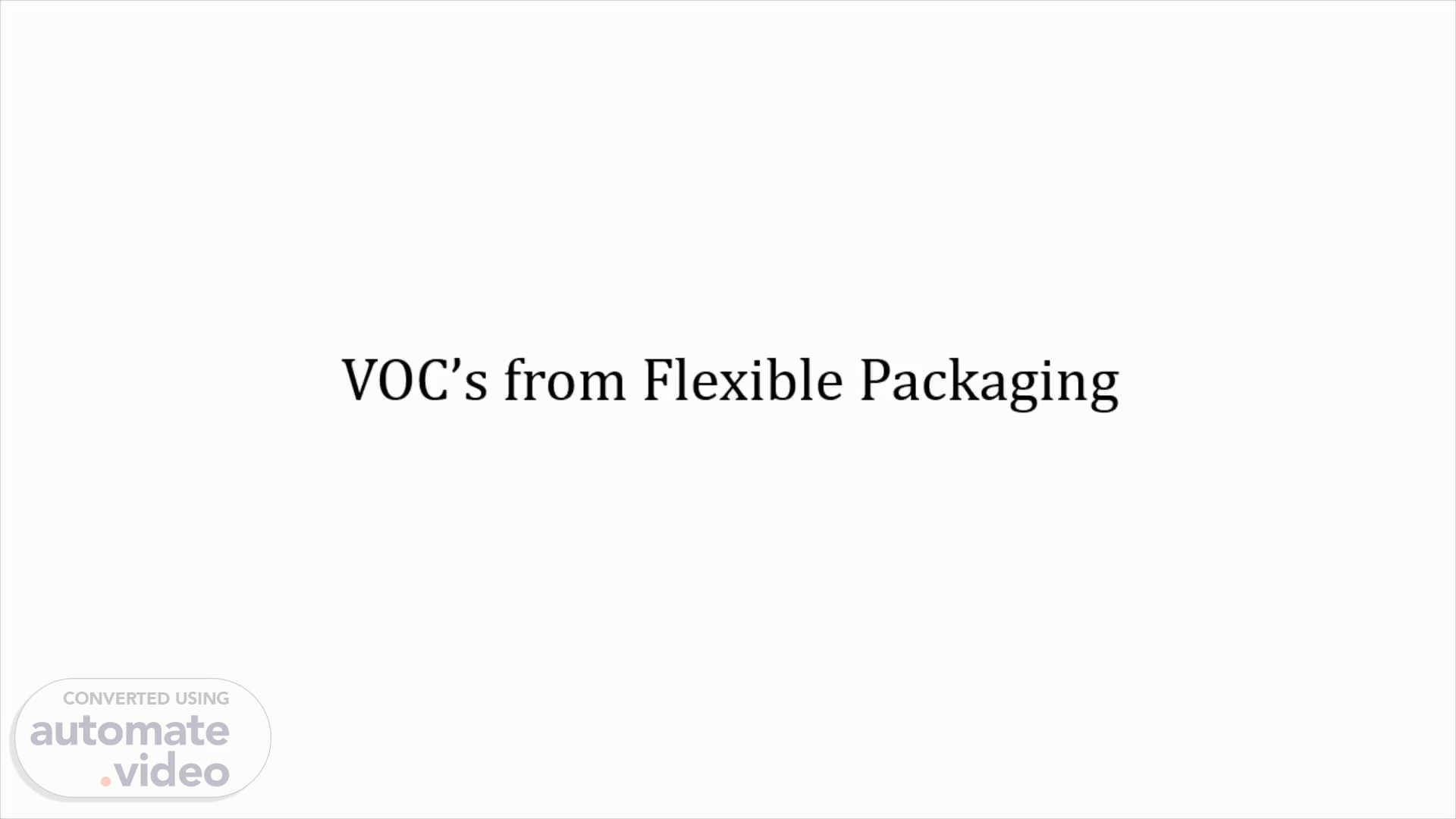
VOC's from Flexible Packaging
Scene 1 (0s)
VOC’s from Flexible Packaging.
Scene 2 (6s)
20 NOJ Activate Wi Go to Settings t. volatile organic compound (VOC) emissions into the atmosphere are among the primary environmental problems caused by flexible packaging printing plants. Since 1999, VOC emissions from the use of solvents in various technological processes have been limited by the volatile organic ance with these compounds solvents emissions directive, and by directive 2010/75/EU on industrial emissions since 2010. Thus, flexible packaging plants require processing technologies or other solutions to ensure compli -requirements..
Scene 3 (27s)
press ESC to exit full screen o uene • Toluene is a clear and colorless liquid • Toluene is used in the process of the production of gasoline and other fuels • Toluene is also used in making paint, paint thinners, fingernail polish, adhesives and rubbers • At high levels Toluene does not concentrate in animals or humans.
Scene 4 (1m 1s)
Press Esc to exit full screen Indust ial solvents Activate Windows •Go to Settings to activate Windows..
Scene 5 (1m 36s)
Press Esc to exit full screen Volatile Organic Compounds Generic effects Go to Settings tc.
Scene 6 (1m 45s)
Press Esc to exit full screen Where is exposure to VOCs likely to occur? Activate Wi Go to Settings.
Scene 7 (1m 53s)
Sub – acute : Defatting of Skin dermatitis.
Scene 8 (2m 0s)
Acute: Depression of central nervous system I NARCOSIS LAUGH vate Wi Settings t.
Scene 9 (2m 7s)
Irriation Icreased effect with Number of functional groups Unsaturated compounds.
Scene 11 (2m 20s)
_S 01 09 — uoans llnj sue8J0 uo ssald.
Scene 12 (2m 26s)
Press Esc to exit full screen n-Hexane can cause peripheral neuritis I-13C C c CH Activate Wi Go to Settings t.
Scene 13 (2m 35s)
Press Esc to exit full screen Benzene - is a known human carcinogen causing leukaemia Activate W Go to Settings.
Scene 14 (2m 43s)
Press Esc to exit full screen Common Vola e rgaruc Compounds • Benzene • Xylene . Toluene FCN —H CH3 CH3 CH2 CH3.
Scene 15 (2m 54s)
Press Esc to exit full screen CHCH2 Styrene is highly irritant styrene Activate Wi Go to Settings.
Scene 16 (3m 2s)
Many Polycyclic Aromatic Hydrocarbons (PAHs) can cause bladder and other cancers benzo(a)pyrene Activate Wi Go to Settings.
Scene 18 (3m 15s)
olatile organic compound (VOC) emissions into the atmosphere are among the primary environmental problems caused by flexible packaging printing plants. Since 1999, VOC emissions from the use of solvents in various technological processes have been limited by the volatile organic compounds solvents emissions directive, and by directive 2010/75/EU on industrial emissions since 2010. Thus, flexible packaging plants require processing technologies or other solutions to ensure compli - ance with these requirements. In this paper, combined VOC pollution prevention and treatment alternatives were suggested and were evaluated for their technical, environmental, and economic feasibility. A flexible plastic packaging company that produces over 1920 t/year of plastic packaging for the food industry was selected for detailed analysis. The material and energy flow analysis shows that VOC emissions from the main technological processes reached 112.2kg/t of production, and a considerable amount of energy (up to 771.6kWh/t of production) was used. Three integrated pollution prevention and control (IPPC) alternatives of the five analysed in this study were selected and implemented within the company to reduce its.